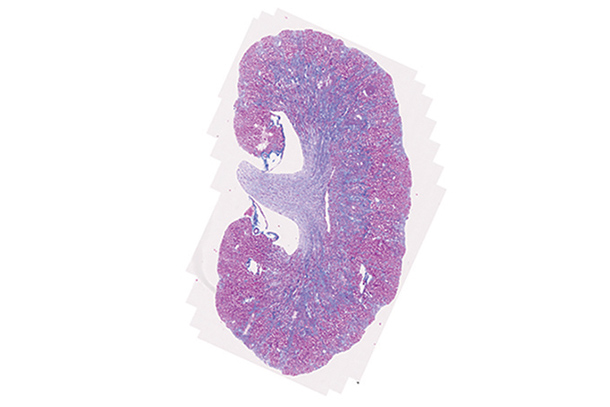The Eli and Edythe Broad Foundation has awarded two $125,000 grants to early-stage scientific investigations at USC’s stem cell research center. The projects are among eight winners of the $1 million Fund for Innovative Stem Cell Research, established by the Broads to celebrate the tenth anniversary of the three stem cell research centers that they established at USC, UCLA and UC San Francisco.
In one project, Andy McMahon, PhD, director of USC’s stem cell research center, and his colleagues will explore the mechanisms that drive normal repair in the adult kidney. Pietro Cippa, MD, PhD, a postdoctoral fellow in the McMahon Lab, and Kun Zhang from UC Diego will bring their expertise to the team.
The scientists will develop an experimental protocol for damaging kidneys—but not so severely that they cannot repair. The current protocol is too extreme: after clamping off the kidney’s primary blood supply, the organ fails to repair and ceases to function. By inducing more moderate damage, McMahon’s team aims to more accurately model patients’ typical kidney injuries, and to analyze the gene activity of the cells involved in the natural process of repair.
“Our long-term goal is to identify and optimize the mechanisms of kidney repair, so that they can be used to enhance healing in patients,” said McMahon, W.M. Keck Provost Professor of Stem Cell Biology and Regenerative Medicine and Biological Sciences at the Keck School of Medicine of USC, and director of the Eli and Edythe Broad Center for Regenerative Medicine and Stem Cell Research at USC.
In the other USC-based project, Scott E. Fraser, PhD, and Justin Ichida, PhD — faculty members in the Keck School’s Department of Stem Cell Biology and Regenerative Medicine — will develop an improved method for labeling different cell types derived from human induced pluripotent stem cells (iPSCs).
The team will adapt an approach, developed by the Fraser Lab, that enables labeling different proteins simply by introducing small pieces of genetic information into human cells. The team will use this method to modify iPSCs such that they express different fluorescent tags when they develop into the various major cell types of the nervous system. By observing the fluorescent tags under a sophisticated microscope, they will be able to visually distinguish the different types of living cells in a brain-like structure.
“Our labeling system will make it easier, less expensive and more efficient to use iPSCs from patients to study a wide variety of diseases in a personalized way,” Ichida said.
McMahon added: “I’d like to thank The Broad Foundation for their 10 years of unwavering commitment to advancing stem cell research in California and beyond.”
— Cristy Lytal


